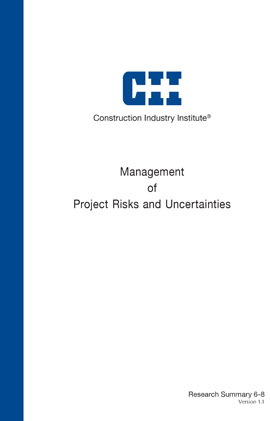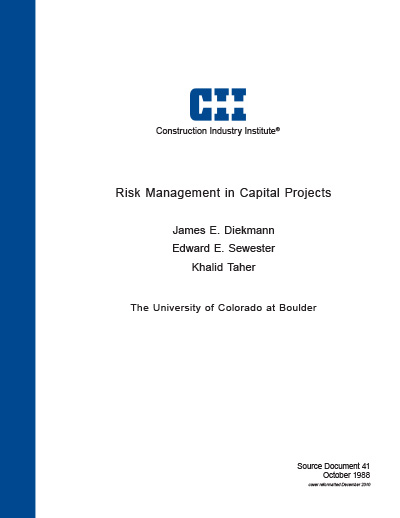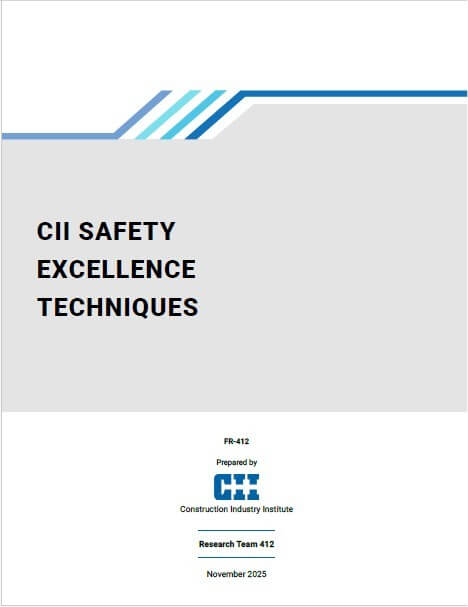
Management of Project Risks and Uncertainties, Version 1.1
Risk and uncertainty are inherent in all construction activities. They carry with them the potential for time, resource, and monetary loss. These risks are divided among the project participants in various ways depending upon contract format and language. The fixed-price construction contract places particularly heavy risk upon the contractor, while a reimbursable contract places it on the owner.
Identification and measurement of risks must be an included element of pre-bid planning by the contractor. Failure to do so is equivalent to overlooking direct work items included in the contract. Because there are so many risks whose consequences can occur in a nearly infinite number of combinations, it is essential that the contractor use a structured approach for their evaluation. A probabilistic approach is a practical one, and sophisticated commercial computer software programs are available to facilitate this analysis.
Accepting risk and providing contingency to cover it is only one form of risk control. Others include risk avoidance, risk sharing, risk reduction, risk transfer, insurance, and risk containment.
While every risk carries with it the potential for a loss, this loss is not assured and there may be a potential for gain. Thus, risk containment efforts must be directed toward both preventing losses and taking advantage of any gain potential.
Contingency accounts are applicable for both cost and schedule. It is recommended that these accounts be distributed over the life of the project, that the responsibility for their control be clearly established, and that their management be highly structured.
The Appendix presents an Example Risk Management Program that applies the methodology discussed in previous chapters.
A risk management program should have three stages:
- Risk identification – including the cataloging of risks and analysis of future possibilities, whether the risk is known, unknown, or some combination
- Risk measurement – in terms of potential costs should a risk become an event (such as Monte Carlo)
- Risk control – including insurance, avoidance, transfer, and containment; contingency funds are discussed here (RS6-8,p. 4)



